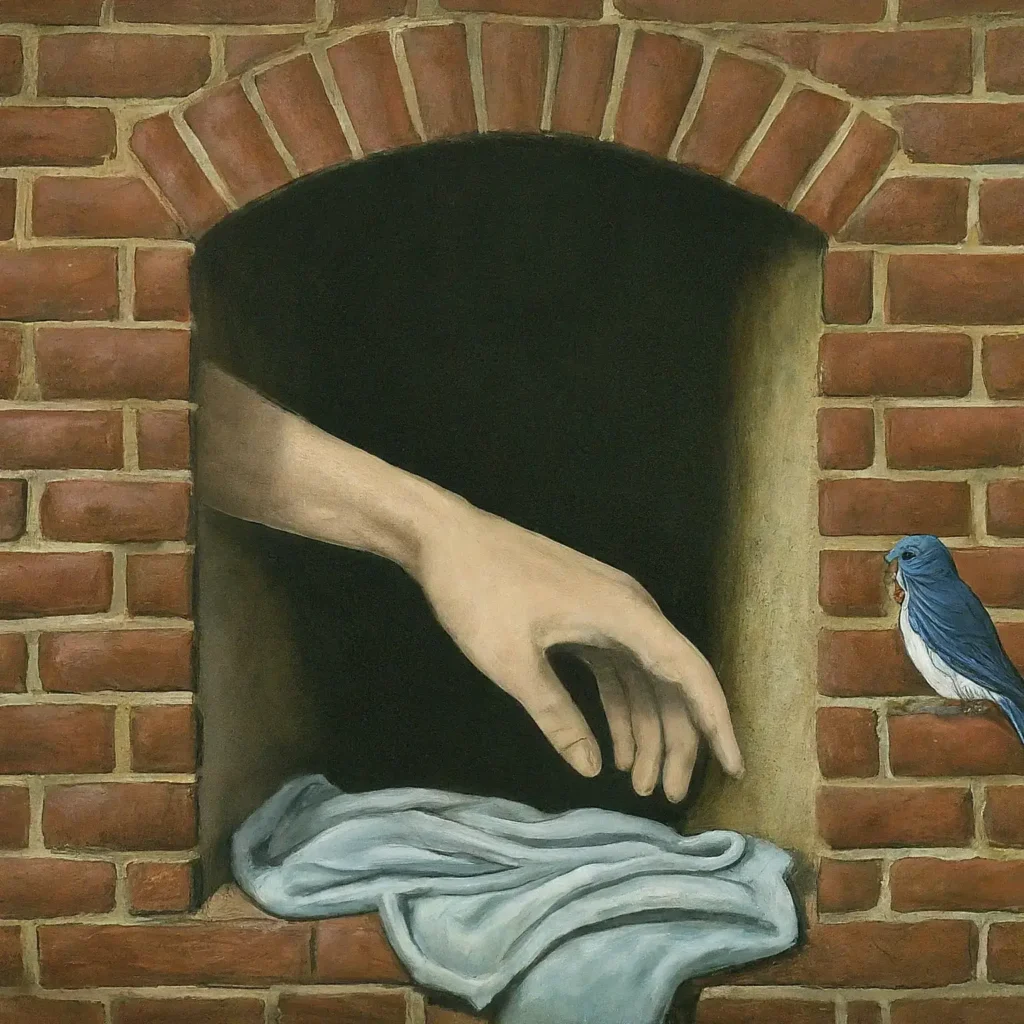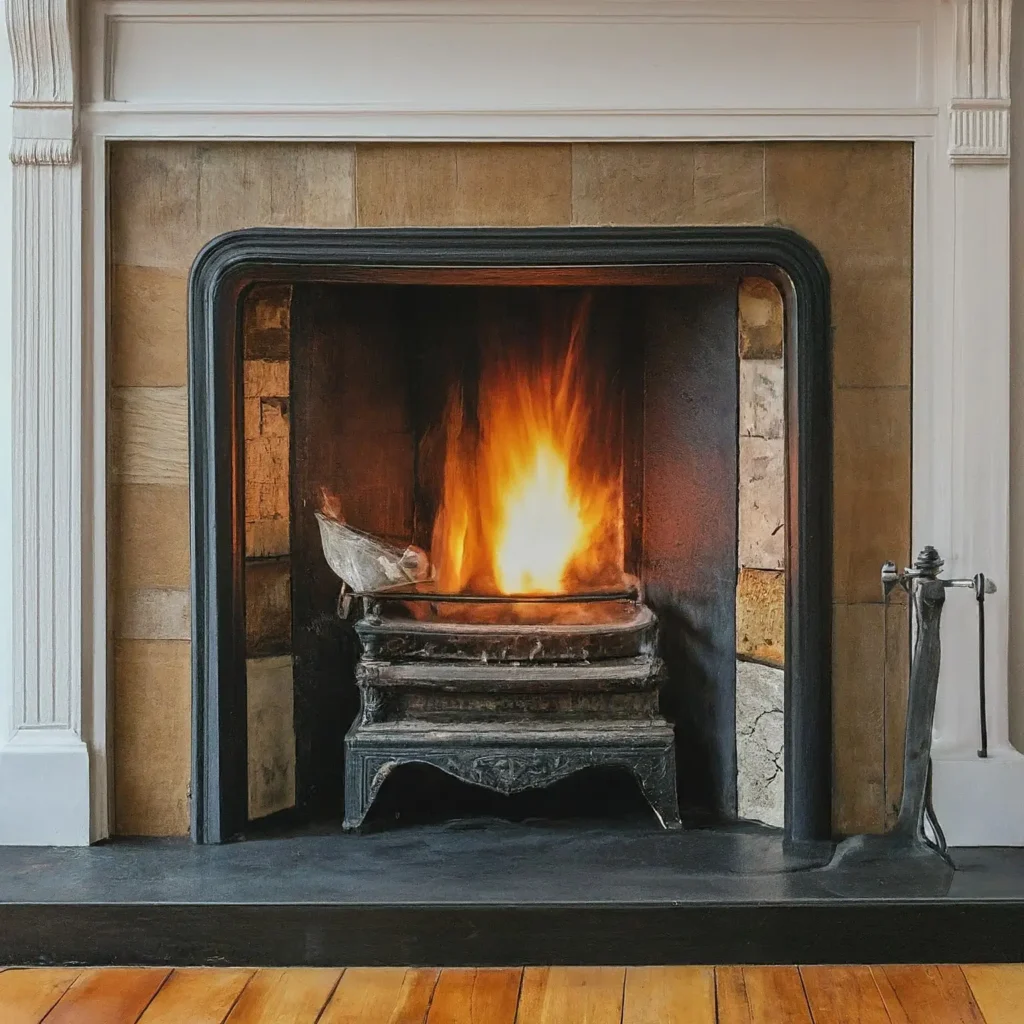It’s not uncommon for birds to become trapped in a chimney, especially when they’ve perched there for rest or nesting.
This typically occurs when they inadvertently venture inside and struggle to navigate back upwards, becoming stuck and stranded in the process. So, what should you do if you find a bird stuck in your fireplace? Here are eight steps to follow:

1. Locate the bird’s precise position.
2. Secure all windows and doors, leaving only one exit.
3. Dim the lights and ensure a quiet environment.
4. Gently crack open the fireplace door.
5. Use a towel or large, breathable sheet to gently corral the bird.
6. Carry the towel outside and release the bird.
7. Monitor the bird’s behavior after release. Once outside, observe the bird for a few moments to ensure it is not injured and can fly away comfortably.
If the bird seems disoriented or unable to fly, consider contacting a local wildlife rehabilitation center for further assistance.
8. Inspect your fireplace for potential entry points. After freeing the bird, thoroughly check your fireplace and chimney for any openings or damage that might allow birds or other wildlife to enter.
Seal any gaps or cracks to prevent future incidents, ensuring the safety of both the birds and your home. Regularly inspect and maintain your fireplace to minimize the risk of animals getting stuck in the future.
If you’re reading this, chances are you’re seeking guidance on how to safely extricate a trapped bird from your fireplace or chimney. In this article, we’ll outline the best practices for handling such situations.
Locate the Bird’s Precise Position: The initial step when suspecting a bird is lodged in your chimney or fireplace is to ascertain its exact location. A distressed bird often produces rustling, flapping, and scratching sounds. These noises may intensify when the TV is on or when people approach its vicinity.
Checking through the fireplace screen is the easiest way to confirm if a bird is stuck. Alternatively, you may also hear loud sounds emanating from the fireplace, signaling the presence of a guest.
If your damper is left open, probably, a bird resting or nesting on the chimney might accidentally fly into the fireplace and become trapped. If you don’t find any sign of a bird in the fireplace, you can open the damper and use a flashlight to inspect if the bird is further up the chimney.
Secure all Windows and Doors, Leaving Only One Exit: If the bird is indeed ensnared in the fireplace, it’s likely seeking an opportunity to escape. However, allowing it to exit into a large room with numerous openings can result in confusion or even injury.
To prevent this, ensure all windows and entrances are closed, leaving only one prominent exit available. Ideally, leave the largest door ajar. In case it’s nighttime and the door is poorly lit, opt for a well-lit window.
Releasing the bird during daylight hours is strongly advised for its safety. This step aims to provide the bird with a clear path to safety, minimizing potential complications.
Dim the Lights and Maintain a Quiet Environment: Before opening the fireplace, create an environment conducive to rescue efforts by drawing curtains and closing doors, except for the designated exit. This single well-lit area will facilitate a smooth escape route for the bird if it decides to fly out immediately upon the fireplace’s opening.
Additionally, maintain silence during the operation. Encourage everyone in the vicinity to silence their devices and refrain from talking, ensuring a calm atmosphere. A quieter room will help put the bird at ease, enhancing the removal process.
Gently Crack Open the Fireplace Door: After dimming the lights and ensuring a quiet environment, proceed to gently open the fireplace door. If you prefer the bird to fly away, fully open the door and hope it chooses to do so. Ensure the escape route is well-lit and quiet, increasing the likelihood of a successful departure.
If you wish to keep the bird in the fireplace, slightly crack the door to maintain access. In a darkened room, the bird will be less tempted to fly out, allowing you to proceed to the next step.
Use a Towel or Large, Breathable Sheet to Corral the Bird:
If the bird is hesitant to leave and remains in place, you may need to manually extract it from the fireplace. Partially open the door and use a towel or large, breathable sheet to gently cover and contain the bird.
Be mindful that the bird may resist and flutter anxiously, emphasizing the importance of maintaining silence to minimize stress. Opting for a large towel is advisable, as it offers added protection against the bird’s beak and talons. However,
a sufficiently large breathable sheet can also be effective, especially with smaller bird species.
Safely Transport the Bird Outside:
The final step is straightforward and should only take a few minutes. Hold both ends of the towel and carry the bird outdoors. Avoid sudden movements, loud noises, or shouting, as these may agitate the bird.
Handle the bird gently and release it once outside. If you’re uncomfortable handling birds, consider enlisting the assistance of a family member or neighbor.
Construct an Improvised Perch: When the bird is positioned too high to access directly, consider crafting an impromptu perch. Stack books or boxes near the fireplace to create a makeshift ladder. Once in place, this structure should enable you to safely reach the bird and assist it down.
Exercise Patience: At times, exercising patience may be the optimal width course of action. If the bird isn’t in immediate peril, it will probably discover its way out in due time. Maintain vigilance over the situation and be ready to intervene if the need arises.
Steps to Take if a Bird is Stuck in the Chimney: If the damper is closed and a bird is trapped in the chimney, follow these steps to rescue it: Open the Fireplace Damper: Provide the bird with an alternative escape route by opening the damper, granting access to the fireplace.
Related: Damper necessary for fireplace
Place a Large Enough Box Inside the Fireplace: Set up a box inside the fireplace, ensuring the open side faces up. Position it on the fireplace grate or elevate it with another box to ensure the bird can easily enter.
Illuminate the Box: Use a flashlight to make the box visible to the bird. This step is crucial, as darkness in the chimney may otherwise obscure the box.
Seal the Box: After the bird enters the box, securely seal it with a cardboard sheet. This prevents the bird from flying back up the chimney. Promptly transport the box outside and remove the cardboard sheet to release the bird.
What to Do if a Bird Nests in Your Chimney: If you suspect a bird is nesting in your chimney, it’s important to exercise patience and avoid disturbing the nest. Allow the bird and its eggs to hatch naturally.
These nests are typically protected by law, and forcing them out is not recommended. Instead, let the birds nest and only intervene if they become stuck.
How to Prevent Birds from Nesting in Your Chimney: To deter birds from nesting in your chimney, consider cleaning it and installing a chimney cap. This cap acts as a barrier, preventing birds from entering and avoiding future nesting or entrapment issues.
When cleaning chimneys and removing nests, take precautions, as wild birds can carry parasites. It’s advisable to consult a professional chimney sweeper for expert handling of the cleaning process.
Hazards of Birds in Your Chimney: Having a bird stuck in your chimney poses potential risks, including harm to the bird itself. Igniting a fire without realizing a bird is present could lead to the bird succumbing to smoke and heat. Additionally, a bird’s nest may obstruct the chimney, potentially causing a dangerous chimney fire.

Furthermore, smoke may flow back into your living space, posing a threat to you and your family. Regular chimney cleaning and inspection are recommended before using your fireplace.
It’s worth noting that bird droppings can transmit histoplasmosis, a disease that can be particularly dangerous for infants and seniors with weakened immune systems. Additionally, wild birds may harbor pests like mites, fleas, and ticks, putting both occupants and pets at risk.
Can I Perform the Cleaning Myself? After the bird has vacated the chimney, you can opt to clean it on your own. Exercise thoroughness and wear protective
clothing to prevent contact with spores or mites. Be sure to take a shower after handling bird droppings. However, engaging experienced professionals is the safest and most effective option.





